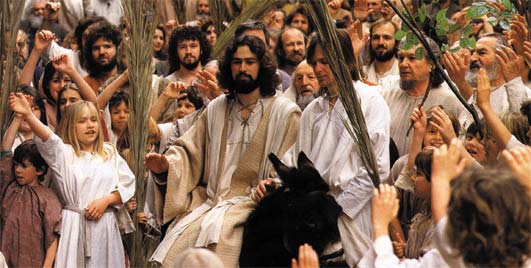
The last Sunday of the Season of Lent is called Passion/Palm Sunday. Traditionally the story of the passion of Christ and the events leading up to the crucifixion is read on this day. This practice, of reading the passion narrative, used to be done on the Saturday before Palm Sunday, but liturgical reform has placed these two events together. The reading of passion story, as well as the distribution and blessing of the Palms, sets the stage of the events of the coming week.
But why palms?
The palm is an ancient symbol of triumph and was often used at times of celebration. During the Jewish Festival of Sukkot, or the Feast of the Tabernacles, palms were one of the four species of plants, the other being magnificent or beautiful trees, thick leafy trees, and willows of the brook, were used as a blessing. This practice comes from the book of Leviticus:
On the first day, you shall take the fruit of majestic trees, branches of palm trees, boughs of leafy trees, and willows of the brook; and you shall rejoice before the Lord your God for seven days. Lev 23:40
In Greco-Roman Culture, palm branches were used as a symbol of triumph and after a victory the victors would be showered with palm branches and the adoring crowd would wave them as they paraded through the streets. In the religion of the Ancient Egyptians, palm branches would have been carried in a funeral procession as a sign of eternal life. The symbolism of both cultures would be represented on the streets outside of Jerusalem on that first Palm Sunday.
In the ancient world, there was the custom of covering the passageway for a person of honor. We see this symbolism today with the rolling out of the red carpet. Branches of trees would have been cut, and items of clothing would be laid on the street in front of a person of honor. In the Palm Sunday story, we see this played out. Jesus was coming to Jerusalem as a king and so would have been honored in such a fashion.
When the king was heading off to war, he would ride on his horse as the horse is a symbol of war. But upon his return, and the restoration of peace to his kingdom, he would have ridden on a donkey, the humble beast and the symbol of peace. Jesus came to Jerusalem not riding on a horse of war but a donkey of peace. Bu the fact that he was greeted with the palm branches, and the shouting of Hosanna, blessed is he who comes in the name of the Lord, would have made both the Roman and the Jewish authorities very nervous.
Symbolism is imperative in the faith life of Christians and the symbolism of Palm Sunday, and the coming of Holy Week, should not be ignored or thrown off. The depth and richness of our faith come from these symbols, and we need to understand them and the part they play in our lives spiritually.
We stand in our churches on this Sunday holding the palm branches, the symbol of triumph but not a triumph of war but a triumph of peace the peace that passes all understanding.
O God, who in Jesus Christ triumphantly entered Jerusalem, heralding a week of pain and sorrow, be with us now as we follow the way of the cross. In these events of defeat and victory, you have sealed the closeness of death and resurrection, of humiliation and exaltation. We thank you for these branches that promise to become for us symbols of martyrdom and majesty. Bless them and us that this day may announce in our time that Christ has come and that Christ will come again. Amen! Come, Christ Jesus!
